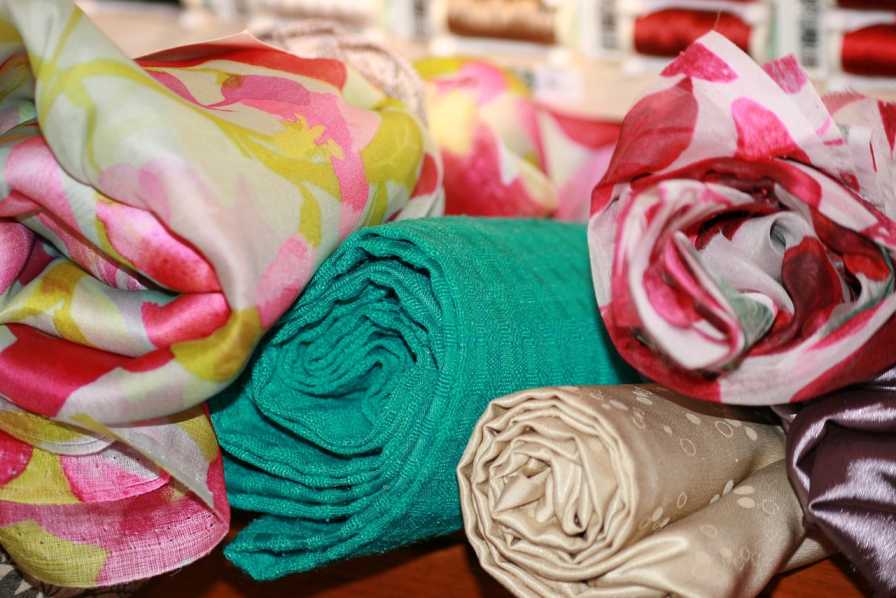Textile finishing is the final and one of the most crucial stages in textile manufacturing. It significantly enhances the fabric’s appearance, feel, and performance. This guide delves into the classification of textile finishes, offering insights into how different types of finishes impact fabric behavior and usability. Whether you’re a textile student, a fashion enthusiast, or a professional in the industry, understanding the types of finishing in textile is essential.
What Are Textile Finishes?
Textile finishes are treatments applied to fabrics after weaving or knitting to enhance their properties. These processes improve characteristics like texture, strength, softness, water repellency, and resistance to shrinkage or wrinkling. The finishing techniques can be broadly categorized based on their purpose and method of application.
Major Classification of Textile Finishes
Textile finishes are commonly classified into the following categories:
1. Based on the Nature of Application
A. Mechanical Finishes
These finishes involve physical treatments to alter the fabric’s surface without using chemicals. Mechanical finishes are often used to enhance the texture or appearance.
Common mechanical finishes include:
Calendaring – imparts smoothness and sheen.
Raising or Napping – produces a fuzzy surface.
Shearing – gives an even surface by trimming protruding fibers.
Sanforizing – controls fabric shrinkage.
B. Chemical Finishes
Chemical finishes use substances to impart functional or aesthetic characteristics. These finishes are usually permanent or semi-permanent.
Examples of chemical finishes:
Water repellency
Flame retardancy
Antimicrobial treatment
Wrinkle resistance
2. Based on Durability
A. Temporary Finishes
These finishes last only until the first few washes. They are mostly aesthetic, like starching or softening.
B. Semi-durable Finishes
These finishes can withstand several washes but eventually fade, such as some soil-release or anti-static treatments.
C. Permanent Finishes
These are chemically bonded to the fiber and last the life of the fabric, like wrinkle-free or flame-retardant finishes.
3. Based on Purpose or Functionality
A. Aesthetic Finishes
These finishes improve the look and feel of the fabric.
Common aesthetic finishes:
Mercerization – enhances luster and strength.
Beetling – used mainly on linen for sheen and compactness.
Embossing – creates decorative patterns.
B. Functional Finishes
These finishes impart specific properties that enhance the fabric’s performance in particular applications.
Important functional finishes include:
Anti-microbial finishes – for healthcare and sportswear.
UV protection – for outdoor apparel.
Moisture management – improves comfort in activewear.
Anti-pilling – prevents formation of small fiber balls on the surface.
4. Based on Application Stage
A. Pre-treatment Finishes
These are applied before dyeing or printing to prepare the fabric. Desizing, scouring, and bleaching are common pre-treatment processes.
B. Interim Finishes
Interim or preparatory finishes occur between other processing steps and may involve softening or drying.
C. Final Finishes
These are the last treatments, meant to enhance aesthetics or functionality before the fabric reaches the consumer.
Types of Fabric Finishes in Different Textile Sectors
Understanding the types of finishes in fabric is essential in various textile applications:
Apparel Textiles: Finishes like wrinkle resistance, softening, and water repellency improve user comfort and maintenance ease.
Home Textiles: Flame retardant and stain-resistant finishes are vital for items like curtains and upholstery.
Technical Textiles: Functional finishes such as anti-bacterial, anti-static, and breathable membranes are crucial for medical, industrial, and sports applications.
Importance of Selecting the Right Fabric Finish
Choosing the correct finish depends on the end-use of the textile product. While aesthetic finishes improve visual appeal and marketability, functional finishes ensure usability and performance. Both play a vital role in the fabric’s value addition.
Moreover, sustainable and eco-friendly finishing methods are gaining traction. Enzyme treatments, plasma technology, and ozone finishing are some greener alternatives replacing harsh chemical processes in modern textile finishing.
Conclusion
The classification of textile finishes is vital for anyone involved in textile production, design, or usage. By understanding the types of finishing in textile, including mechanical, chemical, aesthetic, and functional finishes, you can make informed choices that suit specific end-uses. The right finish not only boosts fabric performance but also adds value in terms of comfort, durability, and style.
Whether you’re exploring the types of fabric finishes for academic purposes or practical application, mastering these classifications equips you to navigate the complex world of textile processing with confidence.
Frequently Asked questions:
What is the classification of fabric finishes?
Fabric finishes are classified based on their application method and purpose: mechanical finishes (e.g., calendaring, napping), chemical finishes (e.g., water repellency, flame retardancy), durability (temporary, semi-durable, permanent), and function (aesthetic or functional). These treatments enhance the fabric's appearance, texture, performance, or durability for specific end uses.
What is the classification of textile fabric?
Textile fabrics are classified based on their fiber origin and construction method. They include natural fabrics (cotton, wool, silk), synthetic fabrics (polyester, nylon), woven fabrics (plain, twill, satin), knitted fabrics (weft, warp), and nonwoven fabrics (felt, bonded). Each type offers unique properties suited for specific applications.
What is classified as textiles?
Textiles are materials made from fibers, yarns, or filaments, used in the production of fabrics and related products. They include woven, knitted, nonwoven, and braided materials made from natural or synthetic fibers. Textiles are used in clothing, home furnishings, industrial applications, medical textiles, and technical or smart fabric innovations.
What do you mean by textile finishes?
Textile finishes are treatments applied to fabrics after weaving or knitting to enhance their appearance, feel, or performance. These finishes can be mechanical or chemical and serve various purposes, such as improving softness, durability, water repellency, wrinkle resistance, or flame retardancy, depending on the intended use of the fabric.

